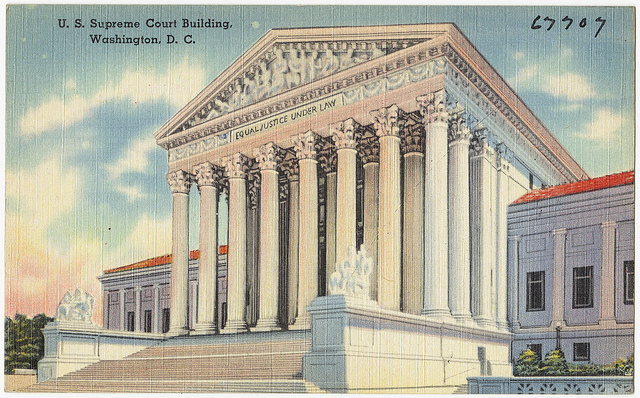AARP Hearing Center
On First Monday, Some Supreme Court Milestones
By Lisa McElroy, October 7, 2013 12:02 PM
Happy First Monday!
You may know that the U.S. Supreme Court starts its term every year on the first Monday of October. But you may not have realized that all the justices on the nation's highest court are eligible for membership in AARP. (The youngest is Justice Elena Kagan, who's 54.)

The nine justices are fine evidence for the theory that people who love what they do stay young at heart. The oldest justice ever? Oliver Wendell Holmes, who retired at age 90. (What about John Paul Stevens, you might say? He retired in 2010, just before breaking Holmes' record.)
Here are six Supreme Court "turning points" to remember on First Monday:
- Gideon v. Wainwright turns 50. In 1963, the Court unanimously ruled that people who could not afford an attorney in state court would have one appointed for them. Happy 50th birthday, Gideon!
- Brown v. Board of Education will soon turn 60. In 1954 and 1956, the Court held that intentional school segregation violated the U.S. Constitution. Many view the decision in Brown as the start of the civil rights era.
- The Supreme Court building is a septuagenarian. In 1935, the Court got its own building for the first time. Located a block from the Capitol, it's often called the "Marble Palace." Little wonder: It's got marble from Alabama, Georgia and Vermont, as well as from Italy and Spain. Visitors D.C., can tour the building and even sit in on an oral argument. (Look closely at the triangular pediment at the entrance, above the legend "Equal Justice Under Law," and among all the toga-clad figures you'll see the likeness of Cass Gilbert, the building's architect and something of a jokester.)
- Ruth Bader Ginsburg, 80, is the oldest justice. Ginsburg was appointed to the Supreme Court in 1993. Though she may be tiny in stature (she's estimated to be barely five feet tall and weigh about 100 pounds), Ginsburg's a legal heavyweight, leading the liberal wing of the Court in cases involving civil rights and liberties.
- The right to privacy will soon turn 90. The right to privacy was first established in 1925 in Pierce v. Society of Sisters. That decision has been the basis for many more that protect rights near and dear to Americans' hearts, including the right to marry, the right to use contraception and the right to procreate. It's been cited as a precedent, in fact, in more than 100 Supreme Court cases.
- 100! Over the 224-year history of the Court, there have been only 112 justices. The late William Rehnquist - first an associate justice, then chief justice - was No. 100; Elena Kagan is No. 112. (First Monday trivia: President Richard Nixon, who appointed Rehnquist to the Court, later mistakenly referred to him as "Wrenchburg.")
Illustration: Boston Public Library via Flickr
Also of Interest
- Sandra Day O'Connor: Class Dismissed... and Inspired
- 4 Surgeries to Avoid
- Shopping for health insurance? The health insurance marketplace is now open
- Join AARP: Savings, resources and news for your well-being
See the AARP home page for deals, savings tips, trivia and more































































